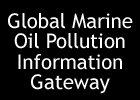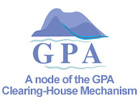U.S.
Pacific States/British Columbia Oil Spill Task Force
The
U.S.
Pacific States/British Columbia Oil Spill Task Force was
formally created by a Memorandum of Cooperation (MOC) signed
in 1989, following two west coast oil spill incidents. The first
involved the barge Nestucca, which spilled oil off the
coasts of Washington and British Columbia in December of 1988;
the second incident was the catastrophic spill by the T/V
Exxon Valdez in Alaska's Prince William Sound in March of
1989. These events highlighted the common concerns shared by
the West Coast states and the Province of British Columbia related
to spill risks from coastal vessel traffic routes, the need
for cooperation across shared borders, and a shared commitment
among West Coast citizens of both the U.S. and Canada to protect
their unique marine resources . Some of the goals of the Task
Force are:
- to
prevent oil spills on the west coast, both large spills
that occur rarely but cause catastrophic impacts, and small
spills that
occur daily and have an equally devastating cumulative effect;
- to
coordinate communication, policy development, response capabilities,
prevention and preparedness initiatives, and education in
order to maximize efficiency of effort;
- to
learn from one another and share ideas and "products.
|
Canada's
NPA
The
clearing-house for Canada's
National Programme Action for the Protection of the Marine Environment
from Land-Based Activities. A national programme to prevent
marine pollution and protect coastal habitat from land-based
activities. At this site, you can discover how land-based activities
contribute to marine pollution and what Canada seeks to do about
it. |
Environmental
Emergencies
Environment
Canada is an active player in confronting the environmental
aspects of emergencies. The mission of the Environmental
Emergencies program is to reduce the frequency, severity
and consequences of these events, through promoting preventive
measures and preparedness, providing response advice and advancing
science and technology, both in Canada and abroad. From this
site one can go to Canada's
Regional Environmental Emergency Team (REET), Environmental
Technology Center (ETC) and Environmental
Emergiencies Regional sites (see Pacific and Yukon).
|
Oil,
Water and Chocolate Mousse
Oil,
Water and Chocolate Mousse is an educational introduction
to the problem of oil in the marine environment, from a Canadian
perspective: what happens when oil is spilled in our waterways;
how we prevent oil spills - both large and small; how we prepare
for oil spills; and what Canadians can do to limit the environmental
damage oil spills can cause. |
Oiled
Bird Rehabilitation Program
Environment
Canada has responsibility for the protection of migratory bird
species, and the British Columbia Ministry of Environment, Lands
and Parks for non-migratory species. As the basis of a strategy
to establish an efficient large-scale rehabilitation capability
throughout British Columbia, and with the combined efforts of
EC, B.C. Environment, and the BCSociety for the Prevention of
Cruelty to Animals (BCSPCA), a Memorandum Of Intent (MOI) on
Oiled
Bird Rehabilitation Program was developed. It provides guidance
for large-scale oiled bird rehabilitation programs during a
major marine oil spill. It establishes roles and responsibilities
for government agencies and non-government organizations. It
is based on the polluter-pays principle, whereby the polluter
will be held accountable for the costs of rehabilitation programs.
See also British Columbia Beached Bird Survey. |
Canadian
Coast Guard Environmental Response
The
Canadian Coast Guard marine progams is a collection of marine
programs and services: Search and Rescue; Boating Safety; Environmental
Response; Icebreaking; Marine Navigation Services; Marine Communications
and Traffic Services; and Navigable Waters Protection.The CCG
Rescue, Safety and Environmental Response Program (RSER)
works to make Canadian waters as safe and clean as possible.
It also keeps the marine environment safe by monitoring and
cleaning spills. |
BC
Environmental Emergency Management
British
Columbia Environmental
Emergeny Management is the management of environmental emergencies
by the BC Ministry of Water, Land and Air Protection, including
Guidelines,
Strategies, and Emergency Response Plans. |
BC
Beached Bird Survey
The
goals of the Beached
Bird Survey are to collect baseline information on the causes
and rates of beached bird mortality, compare current rates with
estimates from 10 years ago, and expand the coverage to a larger
area of the BC Coast. The coastal waters of British Columbia
support some of the highest densities of seabirds, waterfowl
and shorebirds in the eastern North Pacific. The coast also
supports a large amount of marine shipping traffic. There will
be both major and minor spills of petroleum products on occasion,
as well as chronic petroleum pollution. Monitoring the levels
of chronic oiling in BC is important and beached bird surveys
are an effective way of doing this. |
NOAA
Office of Response and Restoration
The
NOAA
Office of Response and Restoration, part of the NOAA National
Ocean Service, offers a web site with tools and information
for emergency responders and planners, and others working to
understand and mitigate the effects of oil and hazardous materials
in our waters and along the U.S. coasts. For oil spill responders:
Job aids - software - ESI mapping - biological monitoring
- the latest Incident News - historical incidents database -
Exxon Valdez - oil and coral - reports, manuals, case histories.
For chemical accident responders: About the CAMEO software
- CAMEO Toolkit - Chemical Reactivity Worksheet. Toxic chemicals
in coastal environments: Sediment guidelines - watershed
tools - regional contaminants data - document library - for
people concerned about cleaning up and restoring coastal ecosystems
contaminated by toxic chemicals. For kids: Answers to
your questions - experiments and projects - help for report
writers - instructor's materials - the story on oil spills.
Image gallery. Products to download. |
NOAA
Damage Assessment and Restoration Program
The
mission of the
Damage Assessment and Restoration Program (DARP), established
in 1990, is to restore coastal and marine resources that have
been injured by releases of oil or hazardous substances and
to obtain compensation for the public's lost use and enjoyment
of these resources. Activities address injuries resulting from
long-term releases of hazardous substances and oil spills; catastrophic
spills. primarily oil; and physical injury to National Marine
Sanctuary resources (e.g., ship groundings on coral reefs). |
EPA
Oil Spill Learning Centre
The
Oil
Spill Learning Centre, as part of the Oil Program of the
U.S. Environmental Protection Agency (EPA) provides information
about the program for preventing, preparing for, and responding
to oil spills that occur in and around waters of the United
States. The web site offers, inter alia, info on
spill characteristics, threats from oil spills, response techniques,
impacts on species and habitats, and the comprehensive PDF book
"Understanding
Oil Spills and Oil Spill Response". See also other
EPA
info on Oil Spills. |
EPA
Emergencies
The
U.S.
EPA Emergencies contains info on Oil
Spills,
Contingency Plans (including Oil Removal Contingency and
Spill Prevention), Emergency preparedness and response. |
U.S.
Coast Guard National Response Centre
The
primary function of the
U.S. Coast Guard National Response Center is to serve as
the sole national point of contact for reporting all oil, chemical,
radiological, biological, and etiological discharges into the
environment anywhere in the United States and its territories.
In addition to gathering and distributing spill data for Federal
On-Scene Coordinators and serving as the communications and
operations center for the National Response Team, the NRC maintains
agreements with a variety of federal entities to make additional
notifications regarding incidents meeting established trigger
criteria. |
USCG
Marine Safety and Environmental Protection
The
web site of the
U.S. Coast Guard's Marine Safety, Security and Environmental
Protection offers documents and other information of general
interest to the maritime community (regulations, rules, navigation
info, etc.) with regard to safety and environmental protection.
See regional
Marine Safety Offices for the Pacific area. See also the
National
Maritime Center, which "maintains an active public
and industry awareness outreach program aimed at communicating
Coast Guard regulatory activites and policy guidelines".
|
Spills
in U.S. Waters
Statistics
of oil spills in U.S. waters (annual data and graphics), 1969-2000.
Oil spill statistics for each year are presented in tabular
format at the beginning of each section and include the following
information: total number of spills and total volume in each
category; mean (average), median and maximum spill size; and
percentages. |
Offshore
Minerals Management
The
Offshore
Minerals Management (MMS), an agency of the U.S. Departement
of the Interior, is responsible for managing offshore public
lands. As part of this MMS is providing the public with technical
information about offshore
activities. MMS collects data on all facets of the offshore
program and publish them online in various forms. The MMS regional
offices also provide information specific to the operations
in the
Gulf of Mexico, Alaska
and
offshore California. The California section of the MMS web
site inclued among others detailed
information about each of the platforms. |
Alaska
Dept. of Environmental Conservation, Division of Spill Prevention
and Response
The
Alaska Department of Environmental Conservation, Division
of Spill Prevention and Response, is Alaska's primary response
organization for oil and hazardous substance releases. It implements
state law to protect public health and the environment from
direct or indirect effects of spills, guard the safety of persons
involved, undertake or confirm the satisfactory cleanup and
mitigation of spill effects and restoration of damages. •
Exxon
Valdez Oil Spill-Ten Years Later provides information about
the many changes to oil spill prevention and response since
the Exxon Valdez oil spill in March 1989. • See
also the Exxon
Valdez Oil Spill Trustee Council for more information about
the ExxonValdez spill. The Oil Spill Trustee Council
was formed to oversee restoration of the injured ecosystem through
the use of the $ 900 million civil settlement. |
California
Office of Spill Prevention and Response
The
California Office of Spill Prevention and Response (OSPR).
which is housed within the U.S. Department Fish and Game, is
the lead State agency charged with oil spill prevention and
response within California's marine environment. See, for example,
info on oil
spills in California. |
Refinery
Reform Campaign
The
Refinery Reform Campaign is a U.S. national campaign seeking
to clean up America's oil refineries and reduce the dependence
on fossil fuels. The web site is produced by the Texas SEED
Coalition, a non-profit organization dedicated to reducing pollution
and promoting clean energy. |
Ocean
Conservancy
Ocean
Conservancy (formerly Center for Marine Conservation, CMC)
is the largest and oldest organization in the U.S. dedicated
solely to protecting the oceans. The Ocean Conservancy combines
science-based advocacy, grassroots activism, litigation, education
and outreach to find lasting solutions to issues affecting our
oceans and all marine life. The Ocean Conservancy continues
to oppose legislation that provides incentives or encourages
offshore oil and gas exploration and development. |
Sierra
Club
The
agenda of the
Sierra Club National Marine Wildlife and Habitat Committee
includes permanent protection of environmentally sensitive areas
now covered by a moratorium on offshore oil leasing and development. |
Hawa'ii
Oil Spill Center
The
Hawaii Oil Spill Center (HSC) is dedicated to oil spill
emergency response preparedness, and is wholly funded by the
member companies of the Clean Islands Council and the Marine
Spill Response Corporation. Members are private companies mostly
shipping companies and some electricity utilities. |
American
Petroleum Institute
The
American Petroleum
Institute (API) represents America's oil and natural gas
industry and has more than 400 members involved in all aspects
of this industry. The members of the API "are dedicated
to continuous efforts to improve the compatibility of our operations
with the environment while economically developing energy resources
and supplying high quality products
and services to consumers". The API Energy
Consumer Site includes general info on oil and natural gas,
whereas the Energy
Professional Site (including production statstics, technology,
etc.) targets the industry and policy-makers. |


